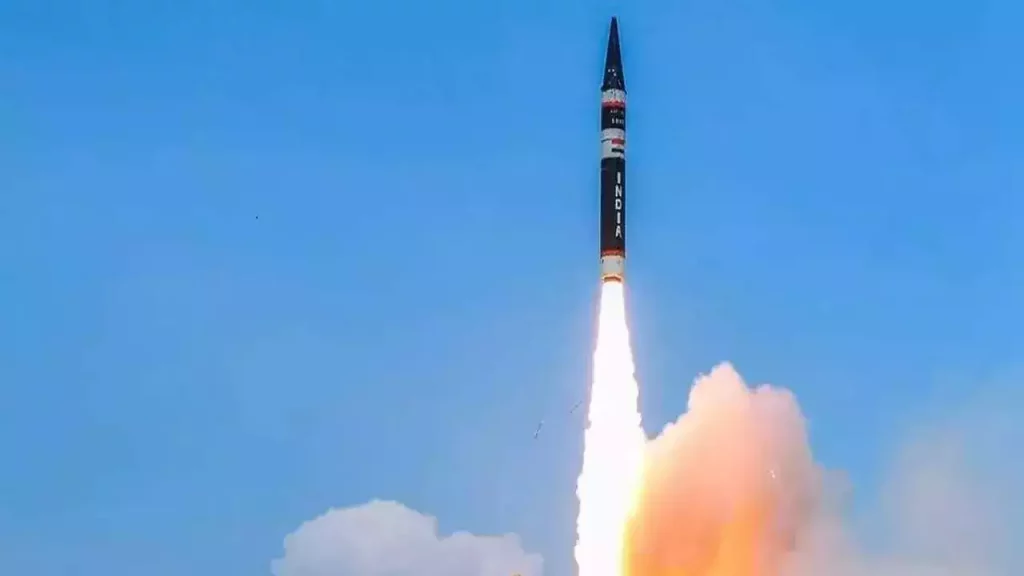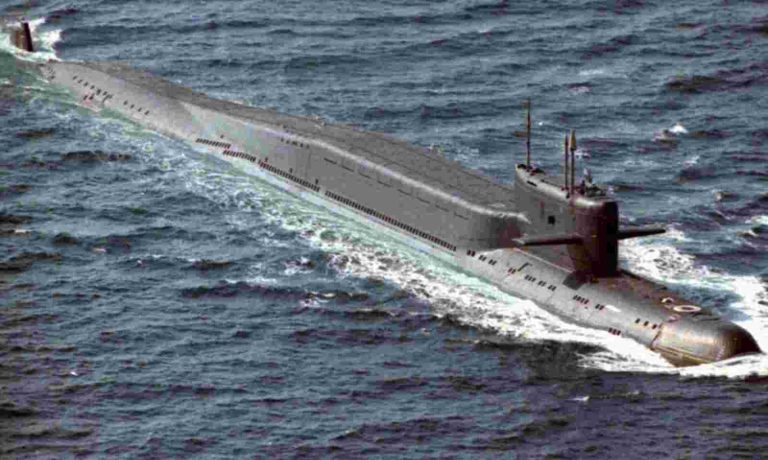The indigenous ballistic missile nuclear submarine INS Arihant successfully launched a nuclear-capable submarine-launched ballistic missile (SLBM) in the Bay of Bengal on Friday (October 14), according to a statement from the Ministry of Defense (MoD).

The nation’s first indigenous Strategic Strike Nuclear Submarine, INS Arihant, served as the launching platform for the SLBM. The nuclear ballistic submarine, or SSBN, programme, a key component of India’s nuclear deterrence capability, said the MoD that the test is significant for it.
The missile hit the target area in the Bay of Bengal with a high degree of accuracy after being tested to a predetermined range. The weapon system’s operational and technological parameters have all been verified, according to a press release from the MoD on Friday. The test was referred to by the Ministry as a user training launch.
“The successful launch of the SLBM by INS Arihant for user training is significant to demonstrate crew competency and validate the SSBN programme… According to the Ministry, India’s policy of having a “credible minimum deterrence” that supports its “no first use” commitment is consistent with having a strong, resilient, and assured retaliatory capability.
The specifications and range of the missile that was launched on Friday were not mentioned in the statement. No official confirmation was available, but sources speculated that it might have been the K-15 (also known as Sagarika), a member of the ‘K’ family of SLBMs.
Defense Research and Development Organization has developed the submarine-launched ballistic missiles (SLBMs), also known as the “K” family of missiles (DRDO). The family’s codename honours Dr. APJ Abdul Kalam, the 11th President of India and a key player in India’s missile and space programmes.
The Agni series of missiles, which are medium and intercontinental range nuclear capable ballistic assets, are lighter, more compact, and stealthier than their land-based counterparts because they will be launched from submarines. The ATV project has been closely coordinated with the development of the K family of missiles.
In the context of achieving a nuclear triad, especially in light of India’s “No First Use” policy, the ability to launch nuclear weapons from submarine platforms has great strategic significance. The second strike capability is significantly increased by the sea-based underwater nuclear capable assets, which supports the nuclear deterrence. These submarines are able to launch a strike in retaliation after surviving an enemy first strike, achieving “Credible Nuclear Deterrence.”
In light of India’s relations with China and Pakistan, the development of these capabilities is critical. With China having deployed several submarines, some of which are nuclear powered and nuclear capable, India’s capacity building on nuclear powered submarines and nuclear capable missiles that can be launched from them is critical for nuclear deterrent.
The MoD statement following Friday’s launch from Arihant emphasised the strategic postures of ‘credible minimum deterrence’ and ‘no first use,’ which are central to India’s nuclear doctrine, which was made public in January 2003, following a review of the progress in operationalizing India’s nuclear doctrine by the Cabinet Committee on Security (CCS).
The key points in the doctrine made public at the time were: building and maintaining a credible minimum deterrent; a “no first use” posture indicating that nuclear weapons will only be used in retaliation against a nuclear attack on Indian territory or Indian forces anywhere; and that nuclear retaliation to a first strike will be massive and designed to “inflict unacceptable damage.”
According to the concept, nuclear retaliation attacks can only be authorised by civilian political leadership via the Nuclear Command Authority. However, the Cabinet Committee on Security had also evaluated and approved other chains of command for retaliatory nuclear attacks in all scenarios at the time.











